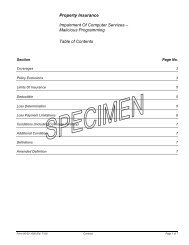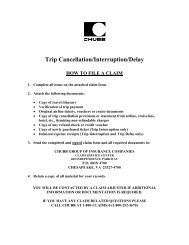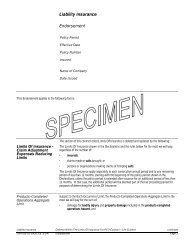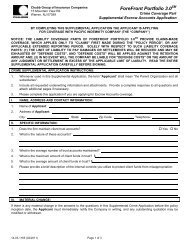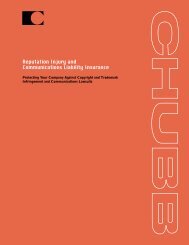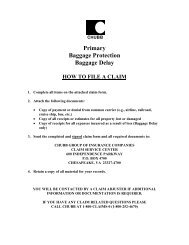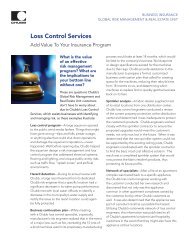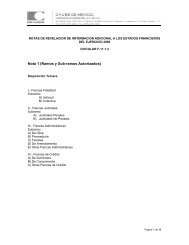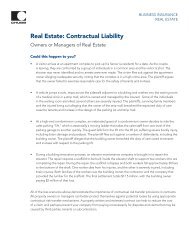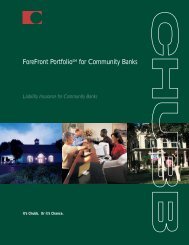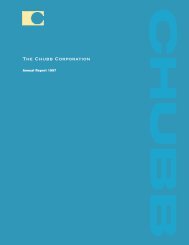Annual Report 2005 - Chubb Group of Insurance Companies
Annual Report 2005 - Chubb Group of Insurance Companies
Annual Report 2005 - Chubb Group of Insurance Companies
You also want an ePaper? Increase the reach of your titles
YUMPU automatically turns print PDFs into web optimized ePapers that Google loves.
annual aggregate limit for the federal government and all insurers <strong>of</strong> $100 billion. If acts <strong>of</strong> terrorism<br />
result in covered losses exceeding the $100 billion annual limit, insurers are not liable for additional<br />
losses.<br />
While the provisions <strong>of</strong> TRIA will serve to mitigate our exposure in the event <strong>of</strong> a large-scale<br />
terrorist attack, our deductible is substantial, approximating $925 million in 2006. For certain classes <strong>of</strong><br />
business, such as workers' compensation, terrorism insurance is mandatory under TRIA. For those<br />
classes <strong>of</strong> business where it is not mandatory, insureds may choose not to accept terrorism insurance,<br />
which would, subject to other statutory or regulatory restrictions, reduce our exposure.<br />
We will continue to manage this type <strong>of</strong> catastrophic risk by monitoring terrorism risk aggregations.<br />
Nevertheless, given the unpredictability <strong>of</strong> the targets, frequency and severity <strong>of</strong> potential<br />
terrorist events as well as the limited terrorism coverage in our reinsurance program, the occurrence <strong>of</strong><br />
any such events could have a material adverse eÅect on the Corporation's results <strong>of</strong> operations,<br />
Ñnancial condition or liquidity.<br />
We also have exposure outside the United States to risk <strong>of</strong> loss from acts <strong>of</strong> terrorism. In some<br />
jurisdictions, we have access to government mechanisms that would mitigate our exposure.<br />
Loss Reserves<br />
Unpaid losses and loss expenses, also referred to as loss reserves, are the largest liability <strong>of</strong> our<br />
property and casualty subsidiaries.<br />
Our loss reserves include the accumulation <strong>of</strong> individual case estimates for claims that have been<br />
reported and estimates <strong>of</strong> claims that have been incurred but not reported as well as estimates <strong>of</strong> the<br />
expenses associated with processing and settling all reported and unreported claims. Estimates are<br />
based upon past loss experience modiÑed for current trends as well as prevailing economic, legal and<br />
social conditions. Our loss reserves are not discounted to present value.<br />
We regularly review our loss reserves using a variety <strong>of</strong> actuarial techniques. We update the<br />
reserve estimates as historical loss experience develops, additional claims are reported or settled and<br />
new information becomes available. Any changes in estimates are reÖected in operating results in the<br />
period in which the estimates are changed.<br />
37



